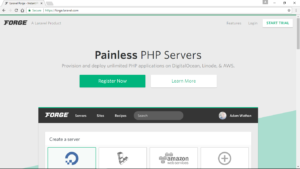Session are a tool which helps the web programmer overcome the stateless nature of the internet. You can use them to build shopping carts, monitor visits to a website, and even track how a user navigates through your application. PHP’s default session handling behavior can provide all you need in most cases, but there may be times when you want to expand the functionality and store session data differently. This article will show you how the default functionality works and then goes on to show you how override it to provide a custom solution.
The Anatomy of Session Storage
Before you implement a custom session save handler, it’s helpful to understand how PHP stores session data normally. The data is saved in a small file on the server which is associated with a unique ID which is then stored in a cookie on the client by the browser. If cookies aren’t used, the ID is usually passed along as a parameter in the URL. Whichever method is used, PHP retrieves the session data in subsequent page requests using the session ID. You can examine how this works by first determining where PHP saves the session data and examine its contents. You can check thesession.save_path directive in your php.ini file, or use the session_save_path() function to output the path.
<?php
echo session_save_path();php.ini or by simply passing the new path to the session_save_path() function.
<?php
session_save_path("/path/to/session/data");session_id() function.
<?php
echo session_id();k623qubavm8acku19somu6ce1k0nb9ajOpening the file
sess_k623qubavm8acku19somu6ce1k0nb9aj you’ll see a string which describes the data in the session. If you were to store the following array in the session like this:
<?php
$arr = array("red", "blue");
$_SESSION["colors"] = $arr;colors|a:2:{i:0;s:3:"red";i:1;s:4:"blue";}
The data is encoded in much the same way the serialize() function would treat the data. When data is stored in a session, all of it is collated together, serialized and, in the case of the default session storage mechanism in PHP, placed in a file. When you need to retrieve the data, the session unserializes the data for use by the application.
The thing to remember here is that the default way in which sessions read and write data is via the serialize() and unserialize() functions. The same will hold true if you were to alter the way in which this data was stored. You can change where the data is stored but not how it is stored.
The Session Life Cycle
When you start or continue a session withsession_start(), the session’s data file is opened and the data is read into the $_SESSION array. When the script’s execution ends, the data is saved back to the file. So when you set a session variable, it is not immediately stored. You can, of course, force the session to store the data by calling session_write_close().
session_set_save_handler() provides a way to override the default session handling mechanism with new functionality so that you can store the data where you’d like. It requires six arguments, each a callback that handles a specific stage of the session life cycle. They are:
- Opening the session file
- Closing the session file
- Reading the session data
- Writing the session data
- Destroying the session
- Garbage collection of the session file and data
Warning: session_set_save_handler(): Argument 1 is not a valid callbackThe callbacks can be defined in any way that PHP allows, so they could be straight functions, closures, object methods, or static class methods.
<?php
session_set_save_handler("open", "close", "read", "write", "destroy", "garbage");open(), close(), read(), write(), destroy(), and garbage() have been defined and registered them as callbacks to session_set_save_handler().
Creating a Custom Session Save Handler
To showcase each callback function I will override the default session handling behavior to instead store them within a MySQL database. The basic schema for the table should include a field for the session ID, a field for the data and a field to determine the time the session was last accessed.CREATE TABLE session (
session_id CHAR(32) NOT NULL,
session_data TEXT NOT NULL,
session_lastaccesstime TIMESTAMP NOT NULL DEFAULT CURRENT_TIMESTAMP,
PRIMARY KEY (session_id)
);
The default method of generating a session ID uses the MD5 algorithm which generates a 32-character string, and so I’ve set my session_id field as CHAR(32). The data held by the session can be unlimited but it’s good practice not to abuse this facility. The access time field can be of type TIMESTAMP.
Opening the Session
The first stage the session goes through is the opening of the session file. Here you can perform any action you like; the PHP documentation indicates that this function should be treated as a constructor, so you could use it to initialize class variables if you’re using an OOP approach. The callback takes two arguments which are passed automatically – the save path and the name of the session.<?php
function open($path, $name) {
$db = new PDO("mysql:host=myhost;dbname=mydb", "myuser", "mypassword");
$sql = "INSERT INTO session SET session_id =" . $db->quote($sessionId) . ", session_data = '' ON DUPLICATE KEY UPDATE session_lastaccesstime = NOW()";
$db->query($sql);
}session_last_accesstime will be updated with the current timestamp. The timestamp is used to ensure the session is “live”; it is used later with garbage collection to purge stale sessions which I will discuss shortly.
Reading the Session
Immediately after the session is opened, the contents of the session are read from whatever store you have nominated and placed into the$_SESSION array. The callback takes one argument which is the session ID which enables you to identify the session that is being read. The callback must return a string of serialized data as PHP will then unserialize it as discussed previously. There is no need to cater for this in your code. If there is no session data for this session, you should return an empty string.
<?php
function read($sessionId) {
$db = new PDO("mysql:host=myhost;dbname=mydb", "myuser", "mypassword");
$sql = "SELECT session_data FROM session where session_id =" . $db->quote($sessionId);
$result = $db->query($sql);
$data = $result->fetchColumn();
$result->closeCursor();
return $data;
}Writing to the Session
Writing the data back to whatever store you’re using occurs either at the end of the script’s execution or when you callsession_write_close(). The callback receives two arguments, the data that is to be written and the session ID. The data received will already have been serialized by PHP.
<?php
function write($sessionId, $data) {
$db = new PDO("mysql:host=myhost;dbname=mydb", "myuser", "mypassword");
$sql = "INSERT INTO session SET session_id =" . $db->quote($sessionId) . ", session_data =" . $db->quote($data) . " ON DUPLICATE KEY UPDATE session_data =" . $db->quote($data);
$db->query($sql)
}Closing the Session
Closing the session occurs at the end of the session life cycle, just after the session data has been written. No parameters are passed to this callback so if you need to process something here specific to the session, you can callsession_id() to obtain the ID.
<?php
function close() {
$sessionId = session_id();
//perform some action here
}Destroying the Session
Destroying the session manually is essential especially when using sessions as a way to secure sections of your application. The callback is called when thesession_destroy() function is called. The session ID is passed as a parameter.
<?php
function destroy($sessionId) {
$db = new PDO("mysql:host=myhost;dbname=mydb", "myuser", "mypassword");
$sql = "DELETE FROM session WHERE session_id =" . $db->quote($sessionId);
$db->query($sql);
setcookie(session_name(), "", time() - 3600);
}session_destroy() function will clear the $_SESSION array of all data. The documentation on php.net states that any global variables or cookies (if they are used) will not cleared, so if you are using a custom session handler you can perform these tasks in this callback also.
Garbage Collection
The session handler needs to cater to the fact that the programmer won’t always have a chance to manually destroy session data. For example, you may destroy session data when a user logs out and it is no longer needed, but there’s no guarantee a user will use the logout functionality to trigger the deletion. The garbage collection callback will occasionally be invoked by PHP to clean out stale session data. The parameter that is passed here is the max lifetime of the session which is an integer detailing the number of seconds that the lifetime spans.<?php
function gc($lifetime) {
$db = new PDO("mysql:host=myhost;dbname=mydb", "myuser", "mypassword");
$sql = "DELETE FROM session WHERE session_lastaccesstime < DATE_SUB(NOW(), INTERVAL " . $lifetime . " SECOND)";
$db->query($sql);
}php.ini directives session.gc_probability and session.gc_divisor. If the probability is set to 1 and the divisor is set to 100 for example, the garbage collector has a 1% chance of being run on each request (1/100).
The example callback uses the max lifetime of the session to compare the time that the session was last accessed. If the lifetime of the session has been exceeded, it removes the session and all data relating to it.
Summary
Changing the default behavior of PHP’s session handling can be useful in numerous situations. This article showed you how PHP treats session data “out of the box” and how this can be changed to suit your own application’s needs by storing the data in a MySQL database. Of course, you could pick your favorite database or another solution such as XML, Memcache, or another file-based system. Unserializing the data before it’s written will enable you to store the data as you see fit, just remember that you have to send the data back in serialized form in order for PHP to make use of it when it’s read. Image via Sergey Mironov / ShutterstockFrequently Asked Questions on Custom Session Handlers in PHP
What is a custom session handler in PHP?
A custom session handler in PHP is a way to control how session data is stored and retrieved. By default, PHP stores session data in files on the server. However, with a custom session handler, you can override this behavior and define your own methods for storing and retrieving session data. This can be useful in situations where you need to store session data in a different format or location, such as a database or a remote server.
How do I create a custom session handler in PHP?
Creating a custom session handler in PHP involves defining a class that implements the SessionHandlerInterface. This interface includes methods for opening and closing a session, reading and writing session data, destroying a session, and garbage collection. Once you’ve defined your class, you can set it as the session handler using the session_set_save_handler() function.
What is the purpose of the session_set_save_handler() function in PHP?
The session_set_save_handler() function in PHP is used to set a user-level session storage function. This function takes six arguments, each of which is a callback function that corresponds to a method in the SessionHandlerInterface. These callback functions are used to open and close a session, read and write session data, destroy a session, and perform garbage collection.
What is the SessionHandlerInterface in PHP?
The SessionHandlerInterface is an interface in PHP that defines the methods a class must implement in order to be used as a session handler. These methods include open(), close(), read(), write(), destroy(), and gc(). By implementing this interface, you can create a custom session handler that controls how session data is stored and retrieved.
How do I store session data in a database using a custom session handler?
To store session data in a database using a custom session handler, you would need to implement the SessionHandlerInterface in a class that interacts with your database. The read() and write() methods would need to be defined to fetch and store session data in the database, respectively. The open() and close() methods would handle establishing and closing the database connection, while the destroy() method would remove session data from the database.
Can I use a custom session handler to store session data on a remote server?
Yes, you can use a custom session handler to store session data on a remote server. This would involve implementing the SessionHandlerInterface in a class that communicates with the remote server. The read() and write() methods would need to be defined to fetch and store session data on the remote server.
What is garbage collection in the context of PHP sessions?
Garbage collection in the context of PHP sessions refers to the process of cleaning up expired sessions. When a session expires, its data is no longer needed and can be deleted to free up storage space. The gc() method in the SessionHandlerInterface is responsible for this task.
How do I set the lifetime of a session in PHP?
The lifetime of a session in PHP can be set using the session.cookie_lifetime configuration directive. This directive specifies the number of seconds after which the session cookie will expire. If set to 0, the session cookie will expire when the browser is closed.
Can I use a custom session handler to encrypt session data?
Yes, you can use a custom session handler to encrypt session data. This would involve implementing the SessionHandlerInterface in a class that performs encryption and decryption operations. The read() method would need to be defined to decrypt session data, and the write() method would need to be defined to encrypt and store session data.
What are the benefits of using a custom session handler in PHP?
Using a custom session handler in PHP provides greater control over how session data is stored and retrieved. It allows you to store session data in a different format or location, such as a database or a remote server. It also allows you to implement additional functionality, such as encryption, that is not provided by the default session handler.
Tim Smith is a freelance web designer and developer based in Harrogate, North Yorkshire in the UK. He started out programming the Spectrum 48k and has never looked back. When he's not boring his other half with the details of his latest project, Tim can be found with his beloved Korgs making music, reading a good book or in the pub.



